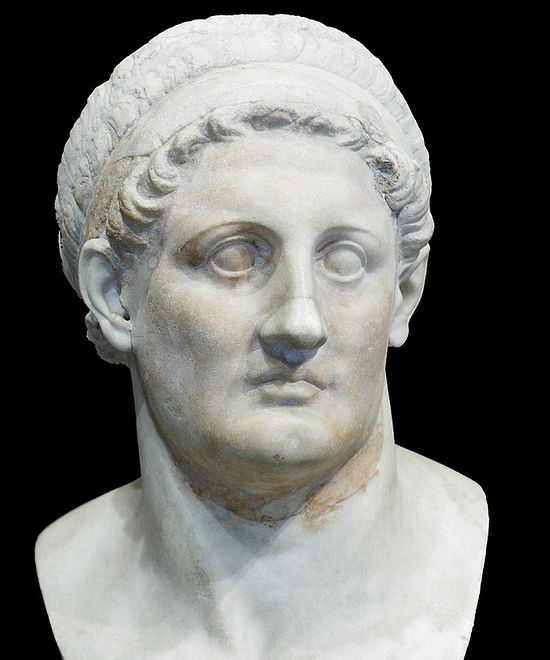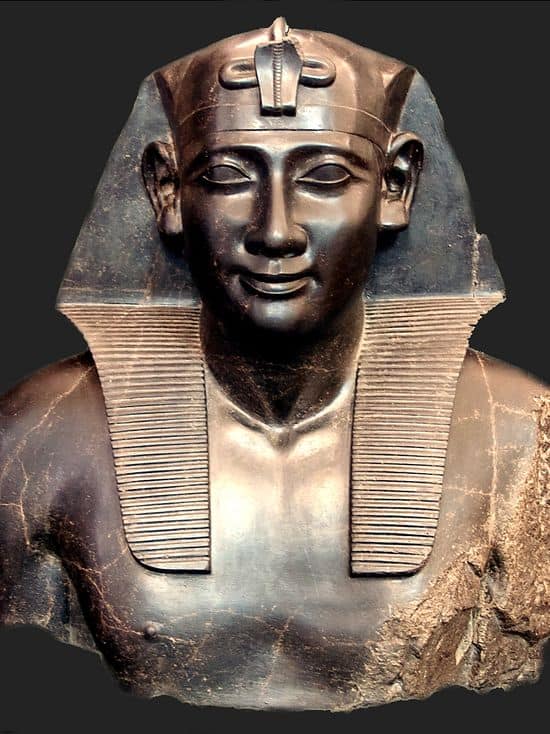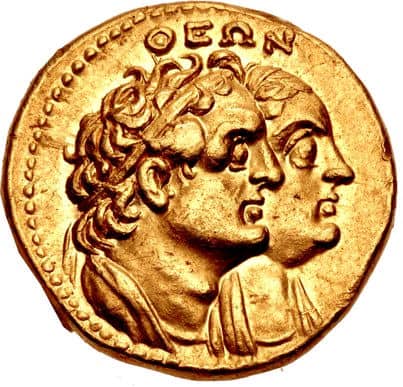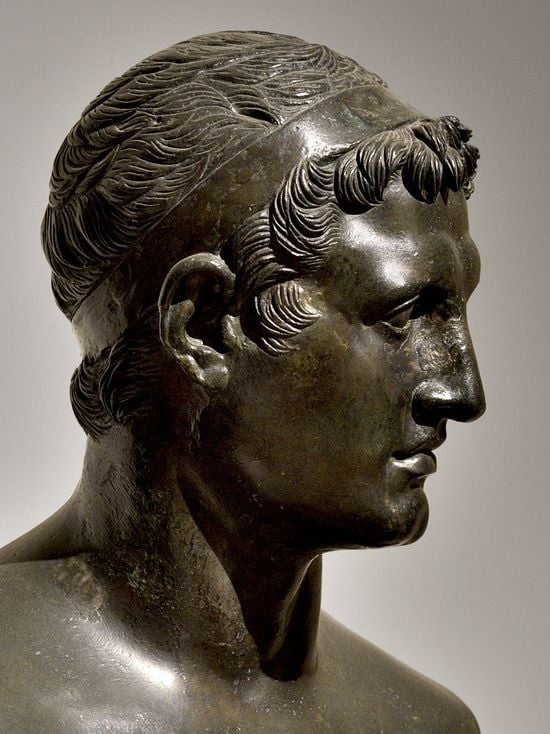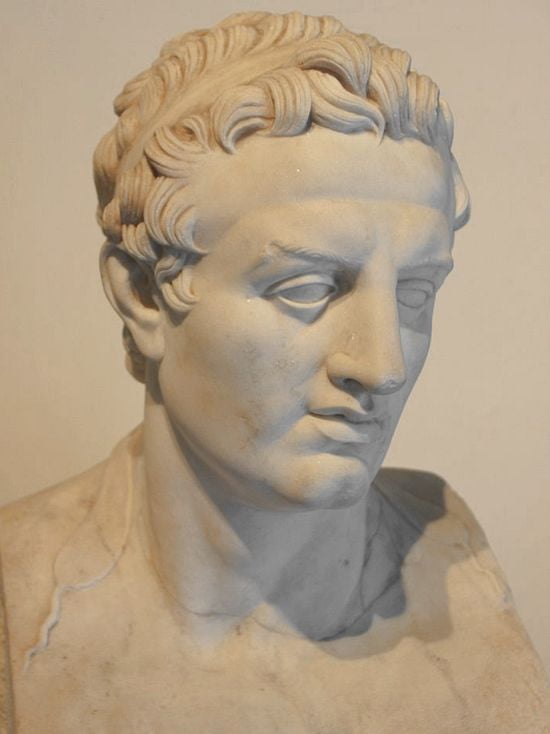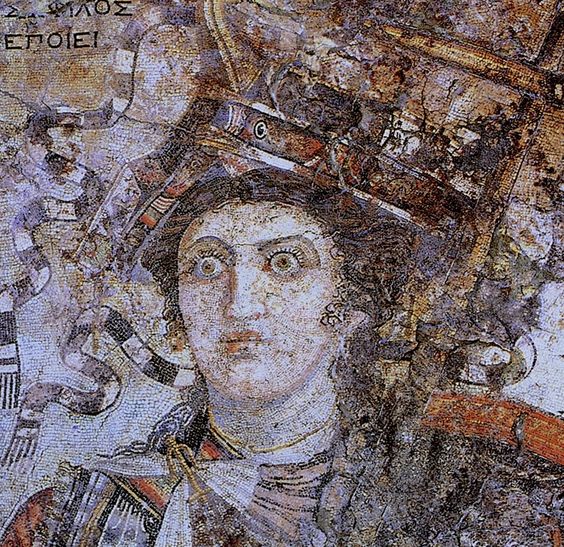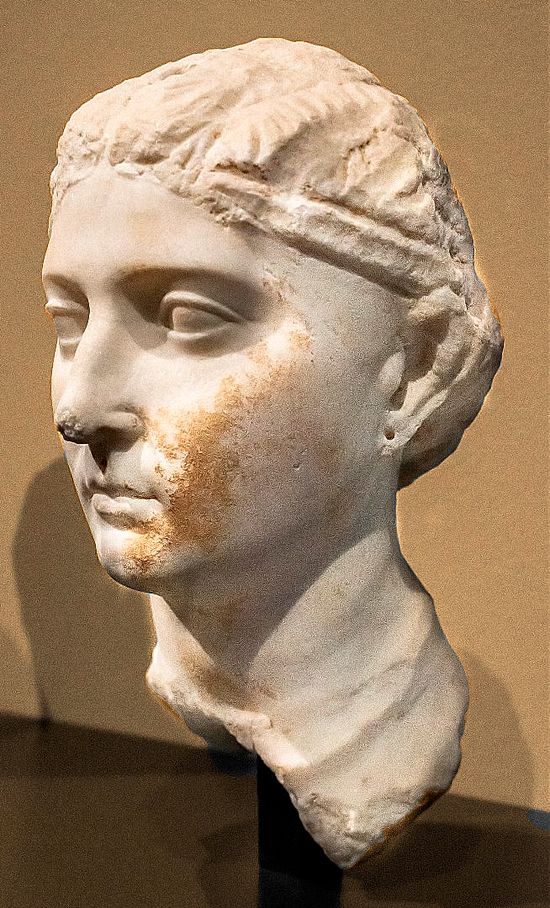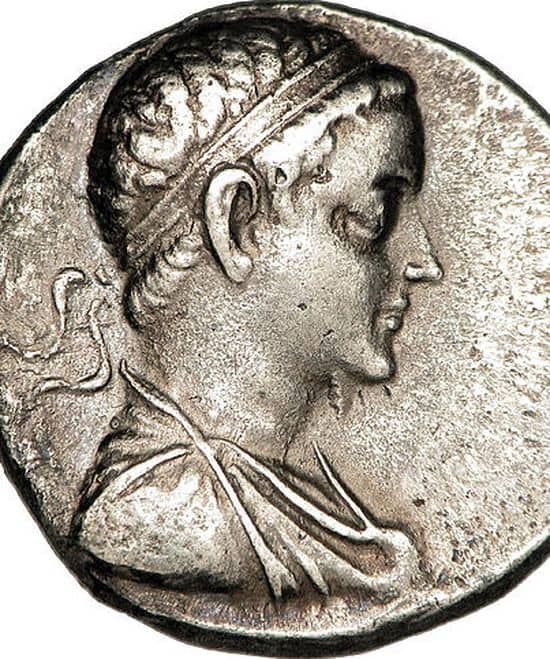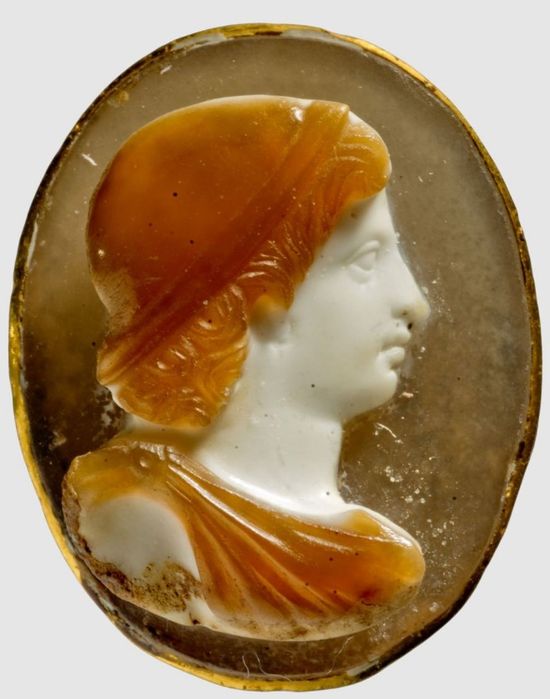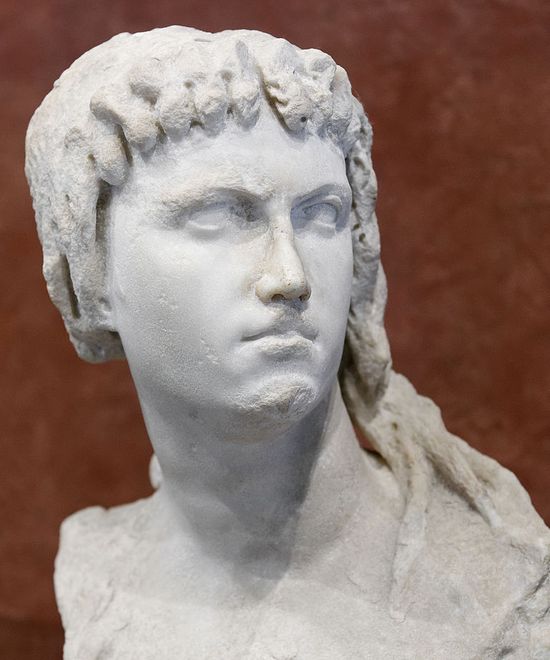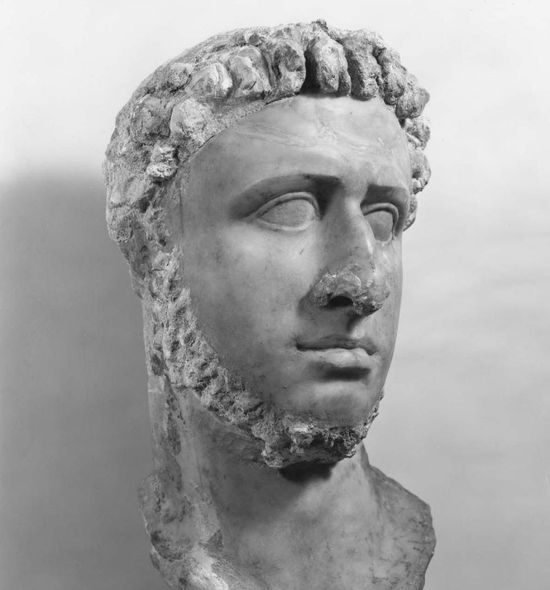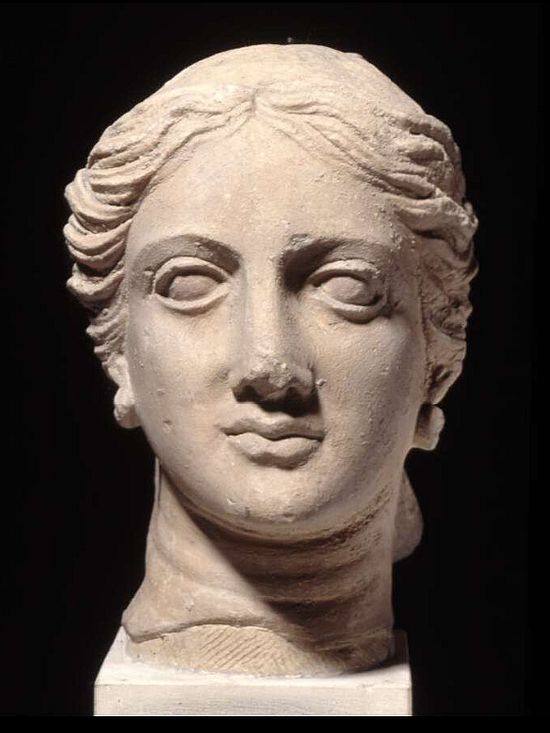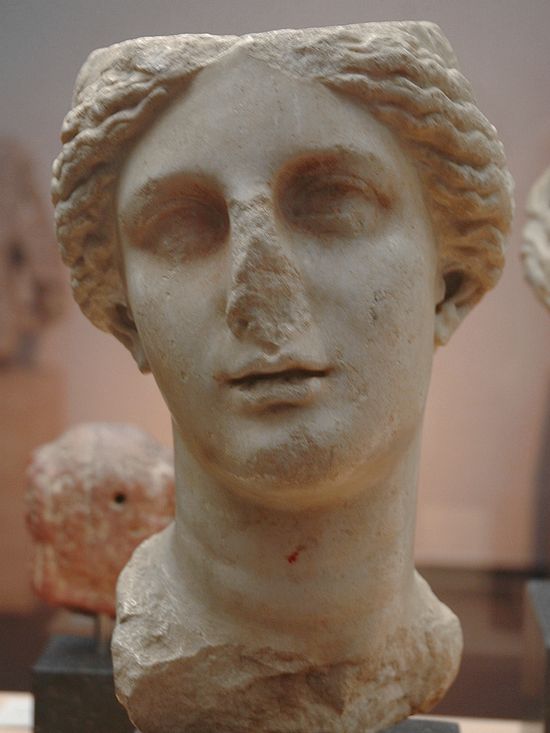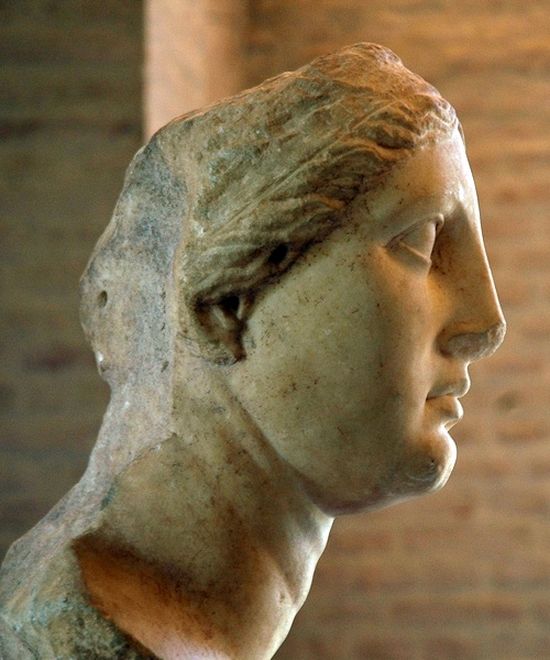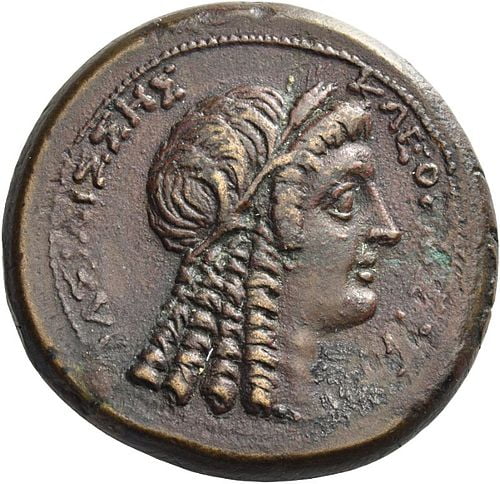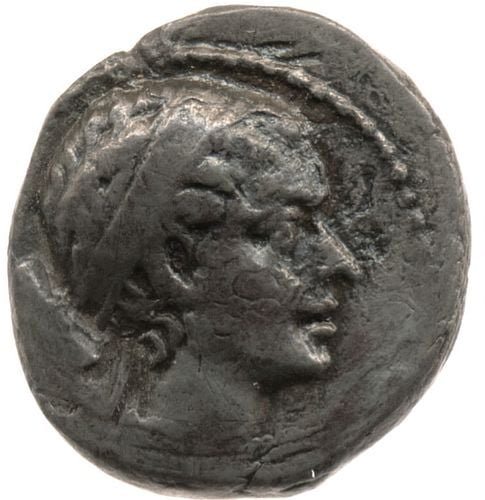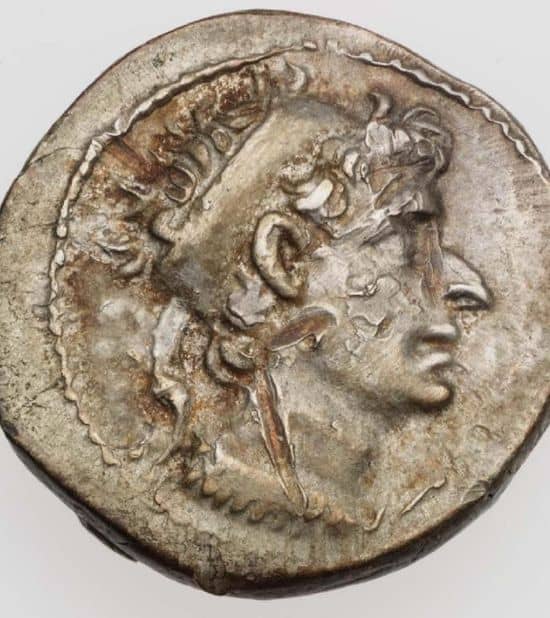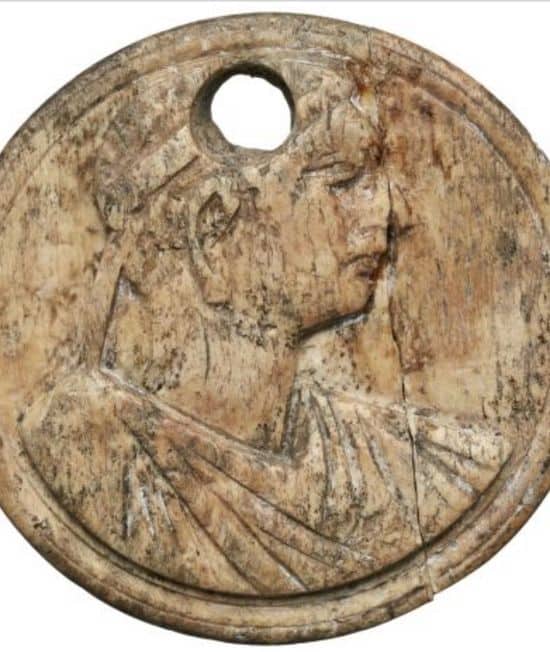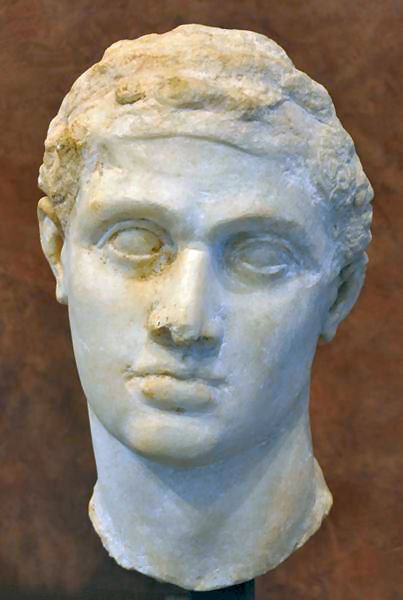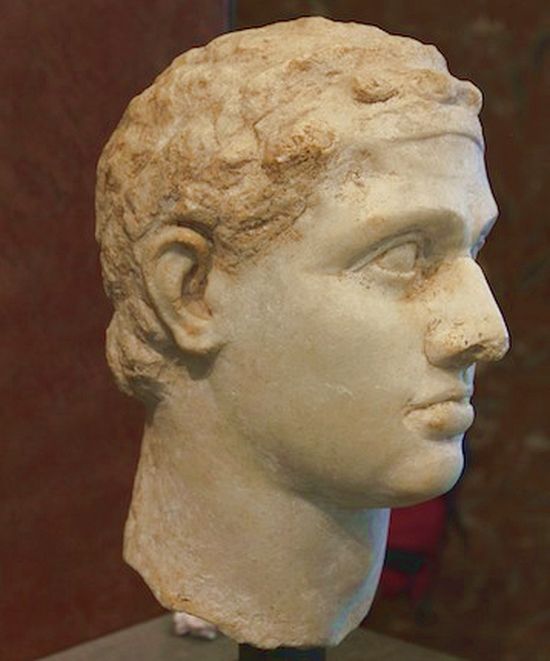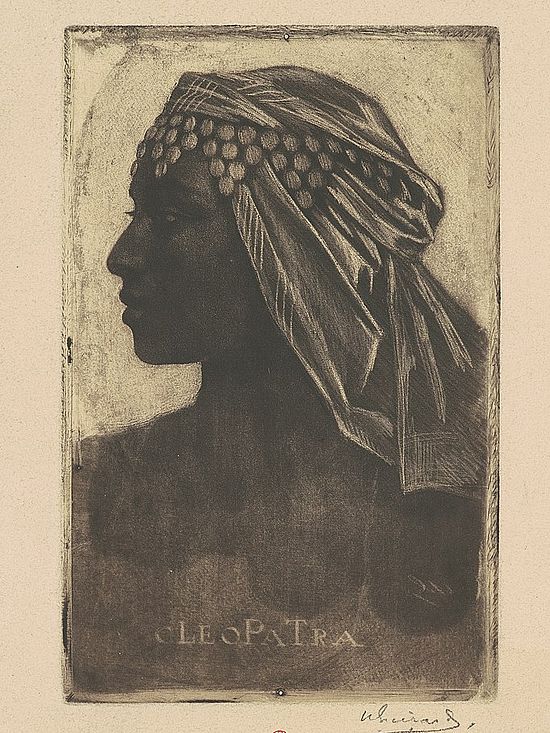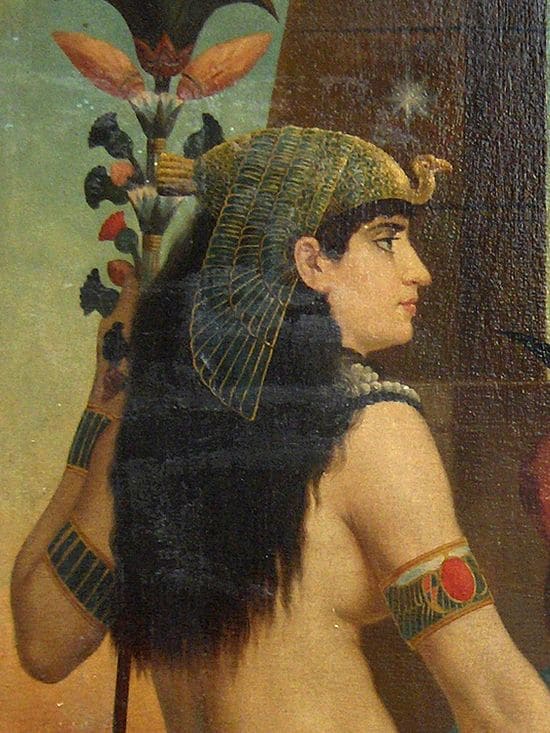Cleopatra was, at least partly, of European descent. Her family left Macedon, in Europe, and landed in Egypt, where they became kings. That is well documented.
But did Cleopatra only have Macedonian blood?
Here is a fast-ish breakdown of Cleopatra’s race.
Background: the decline and invasion of Egypt

When Cleopatra was born, Egypt was in decline and ruled by foreigners. The native Egyptian pharaohs built the pyramids 2,500 (!!) years before Cleopatra’s birth, when Egypt was ultra-powerful. (Photo: Vincent Brown/CCBY2.0)
When Cleopatra was born, Egypt was in decline.
The country had had an impressive run; the native Egyptian pharaohs had built amazing cities, pyramids, and temples. But that was 2,500 years before Cleopatra’s birth.
900 years before Cleopatra was born, Egypt lost its power. It was invaded by a succession of foreign powers, including the Macedonians, who came from Europe.
Why was Cleopatra Macedonian?
Cleopatra’s ancestors, the Ptolomies. Her family was highly inbred. The Ptolemaic kings married their full sisters. (Hover over the images to read the captions.)
The Macedonians conquered Egypt in 332 BC.
The conquest was the doing of Alexander the Great, the famous king of Macedon. He left his small country in Europe with his army and crossed to Africa. He conquered Egypt and declared himself pharaoh.
The Ptolemaic dynasty begins
After Alexander’s death, one of his generals, Ptolemy Lagos, succeeded him on the throne of Egypt.
Ptolemy too was a Macedonian nobleman.
Ptolemy’s descendants ruled Egypt for the next 300 years. They were known as the ‘Ptolemaic’ dynasty.
“Our” Cleopatra was a member of this dynasty.
Actually, the name ‘Cleopatra’ was popular in Macedon; it is not a native Egyptian name.
Cleopatra, according to all ancient accounts, was quite proud of her Macedonian heritage and of her connection to the very famous Alexander the Great.
Now that Ptolemy was a king, he needed children. So he married two Macedonian noblewomen (not at the same time, though).
Thus, Ptolemy’s children were of full Macedonian blood despite being born in Egypt.
After Ptolemy died, his son Ptolemy II became king. He first married a Greek/Macedonian noblewoman. And then, he married his full sister, following an ancient Egyptian tradition.
So Ptolemy II’s children were also full Macedonians, blood-wise.
And most of the other Ptolemy kings followed suit: they married their sisters. That went on for 300 years until Cleopatra was born into this highly inbred family.
That is why Cleopatra had Macedonian blood.
What did Cleopatra Really Look Like?
But were the Ptolemies only Macedonian?
Cleopatra’s ancestors married outside the family only four times. Two of the brides were fully European, the other two were European and Persian.
But the Ptolemies were not only Greek and Macedonian.
Cleopatra’s ancestors preferred to marry their sisters, but in those 300 years, they married outside the family four times.
Each of those times, they chose brides descended from Alexander the Great’s generals (Seleucus, Lysimachus, Antigonus, and Antipater).
The brides were Berenice I, Arsinoe I, Berenice II, and Cleopatra I. They were heavily related to one another, and all of them were of Macedonian descent.
Two of the brides were fully Greek/Macedonian. The other two had a bit more diversity, along with the Macedonian genes, they had Persian (Middle Eastern) ones.
The family trees of these women are well documented because they came from royal houses.
So Cleopatra’s family, the Ptolemies, were of Macedonian and Persian descent. Or to use the modern equivalents, they were of Greek and Iranian descent.
These are Cleopatra’s Dazzling Ancestors. Her Family Tree
Macedonian, Persian, and…?
Our Cleopatra is on the left, on a coin minted by her. The other two are Cleopatra’s brothers, Ptolemy XIII (center) and Ptolemy XIV (right).
Here it gets interesting. The Ptolemies were reigning royals. So there are detailed records of who married whom and the children they had.
It is certain that Cleopatra’s grandfather, King Ptolemy IX of Egypt, was of full Greek and Iranian descent. All his ancestors are neatly accounted for, so there is no doubt he was Caucasian.
But then, two unexpected gaps appear in the family tree. It is not certain who were Cleopatra’s grandmother and mother.
Take a look! Cleopatra’s Real Face: Ancient Coins Showing Cleopatra’s Face
First blank: Cleopatra’s grandmother
Cleopatra’s father, King Ptolemy XII, was nicknamed ‘Nothos’ (bastard). He was the son of the king of Egypt, but who was his mother?
Cleopatra’s grandfather, King Ptolemy IX, dutifully married his two sisters.
But his son Ptolemy XII Auletes, Cleo’s dad, may have been born outside of marriage.
There is no record that Auletes was the son of either queen. The Egyptians and Romans called him ‘Nothos,’ which means ‘bastard’ in Greek. And several ancient writers do seem to imply Auletes was illegitimate.
The Ptolemies had a strong love for everything Greek/Macedonian. Their capital in Egypt, Alexandria, had been founded by Alexander the Great (do notice he named the city after himself) and was full of Greeks. The Ptolemaic court was full of Greeks and Macedonians. The Ptolemies only spoke Greek, and the official documents were written in Greek. And all of the Ptolemies received a Greek education. They were quite proud of their Greek blood, and they held tight to their culture.
So, usually, the concubines of the Ptolemies were Greeks.
Thus, the concubine of Ptolemy IX, Cleopatra’s granddad, was probably Greek. But there is no proof of it. And someone else could have caught the eye of the king.
The Ptolemies were in contact with native Egyptians, also with Europeans, Middle Easterns, Lybians, and Numidians (both in North Africa). All of the former peoples fall under the term ‘Caucasian.’
But the Ptolemies were also in contact with blacks from Kush and other sub-Saharan territories. So the king’s concubine could have hailed from any of these lands.
Thus, there is a possibility that his son, Ptolemy Auletes, aka Cleopatra’s dad, was of mixed blood.
Some scholars have argued that Auletes was not truly illegitimate, that he was the son of Ptolemy IX’s second sister-wife.
But when she married her kingly brother, she was not given the title of queen of Egypt, which was odd. That could account for her son being called ‘illegitimate.’
Neither the Egyptians nor the Romans liked Auletes, Cleopatra’s dad. They thought him weak. So they may have used his mother’s lack of queenly status to denigrate him.
But there is no evidence one way or the other.
According to the majority of serious historians, what is most likely is that Cleopatra’s grandmother was a concubine -of unknown nationality.
Was Napoleon Short, Or is That Fake News?
Second blank? Cleopatra’s mother
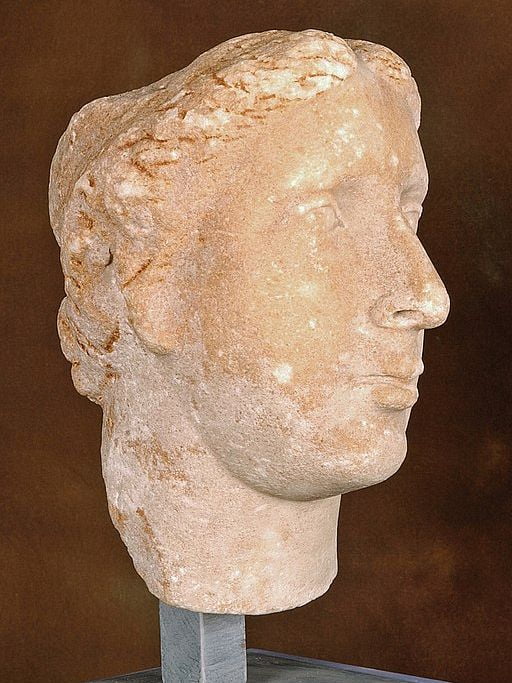
There are no records of who Cleopatra’s mother was, either.
Now, this is a big gap since her mother provided 50% of Cleopatra’s racial makeup.
Cleopatra’s father, King Ptolemy Auletes, married his sister -no surprise there. Her name was Cleopatra V Tryphaena.
But was Tryphaena Cleopatra’s mother?
King Auletes had several children. Soon after the birth of his daughter Cleopatra VII -our Cleopatra-, Queen Trypahena almost disappears from the official documents.
Some scholars think she died during childbirth or soon after our Cleopatra’s birth.
But there are two historical mentions of Tryphaena later on. One, 11 years later, in a dedication on a temple; she is named along with her husband Auletes. And there was a Tryphaena who co-ruled Egypt briefly with Auletes’ oldest daughter Berenice.
So other scholars believe Auletes and his sister-wife Tryphaena had a falling out soon after Cleopatra’s birth. And that he exiled Tryphaena. That would explain her disappearance from the documents and why she is not mentioned as the mother of Cleopatra. The king would have erased her from the records.
If they had a falling out, it would also explain why, later on, Tryphaena plots with her eldest daughter, ousts her husband, the king, and the two women co-rule Egypt for some years.
But the lack of documentation leaves a question mark when it comes to the famous Cleopatra VII. Are there no records of her mother because her mother was simply a concubine? Or was Cleopatra the queen’s daughter, and the association was erased because of a falling out?
Strabo was a Greek author and a contemporary of Cleopatra. He had traveled to Egypt. In his writings, Strabo mentions Auletes’ five children.
He writes that Auletes’ eldest daughter Berenice was a legitimate child: “And since he [Auletes] had three daughters, of whom one, the eldest, was legitimate, they proclaimed her queen.”
Strabo [or at the very least this translation] seems to imply that Auletes’ other daughters were illegitimate.
On the other hand, no Roman author, of the many that knew Cleopatra personally and wrote about her, mentions that she was illegitimate.
This might be telling since the Romans were quite entangled with Cleopatra, and most of them did not like her one bit. She had waged war against Rome, after all.
And let’s remember Romans had no problem calling someone a bastard to their face, as they did with Cleopatra’s father.
Yet, not even Cicero calls her a bastard. The famous Roman orator liked to call people names and point out their flaws. Cicero disliked the queen, whom he had met. He writes about her disparagingly but does not mention she is illegitimate (her father had been less lucky, Cicero did allude he was illegitimate: “He [Auletes]… is neither of the royal family nor of any royal disposition”).
Most surprisingly, not even Octavian calls her illegitimate.
The very Roman Octavian, a relative of Julius Caesar, was Cleopatra’s archenemy. Octavian mounted a full-fledged smear campaign in Rome against the Egyptian queen and her Roman husband, Mark Antony.
Octavian used every possible charge against them -real, exaggerated, imaginary. And yet, he did not call Cleopatra illegitimate once.
In Ptolemy Auletes’ case, most scholars believe he was the son of a concubine. In Cleopatra’s case, most scholars suspect she was the daughter of Cleopatra V Tryphaena, the legitimate queen.
If Tryphaena was Cleopatra’s mother, Cleopatra would have gotten more Macedonian and Persian genes from her.
Summary: Cleopatra’s race
Cleopatra imagined by four European painters.
So only 25% of Cleopatra’s racial makeup is certain: through her grandfather, Cleopatra was 25% European and Middle Eastern.
The other 75% is inconclusive. It could have been European, Middle Eastern, North African, sub-Saharan African, or a mix of any of those.
To simplify: Cleopatra could have been 100% Caucasian, or she could have been mixed (Caucasian+sub-Saharan African).
If the archaeologists make a breakthrough and that 75% is solved, we’ll let you know.
Meanwhile, you can see how Cleopatra looked. Check out her portrait in the coins she minted herself, her ancient statues and paintings, or read how her contemporaries described her.
More on Cleopatra and Julius Caesar:
More Articles
